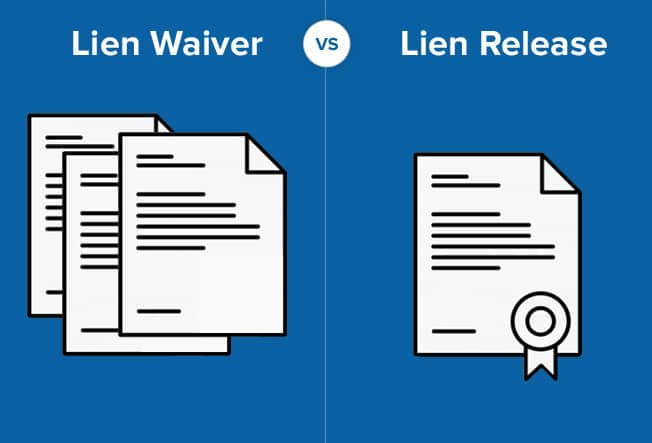If you’ve ever been involved in construction projects, loans, or property transactions, you might have encountered the terms lien waiver and lien release. Both are essential documents, but they serve distinct purposes at various stages of a financial or construction agreement. Understanding these differences can help you avoid financial or legal issues later on.

In this article, we’ll explain what a lien waiver and lien release are, when they are used, and why they are important.
Key Takeaways
- Lien Waiver: A document that prevents a party from filing a lien after receiving payment.
- Lien Release: A document that removes an existing lien after the debt has been fully satisfied.
Knowing the difference between the two can help you navigate financial agreements and ensure you have full control of your property.
What Is a Lien Waiver?
A lien waiver is a proactive legal document commonly used in the construction industry to relinquish the right to file a lien on a property after payment has been made. When contractors, subcontractors, or suppliers receive payments for their work or materials, they issue a lien waiver to the property owner. This waiver guarantees that they will not file a lien on the property in the future.
Why Would You Use a Lien Waiver?
Consider that you’re constructing a house and have hired several contractors to complete the work. Without lien waivers, a contractor could potentially file a lien against your property even after being paid, claiming they weren’t fully compensated for their services. Lien waivers protect you from this risk by requiring contractors to forfeit their right to file a lien once payment is received.
Types of Lien Waivers:
- Conditional Lien Waiver: Only takes effect when payment has cleared.
- Unconditional Lien Waiver: Waives lien rights immediately, even if payment hasn’t fully processed.
What Is a Lien Release?
A lien release is a document that comes into effect after a lien has been placed on a property, usually due to unpaid debts. It is issued when a lender or lienholder has been fully compensated, formally releasing their claim on the property.
Why Would You Need a Lien Release?
For example, if you take out a car loan, the lender will place a lien on your vehicle, which allows them to repossess it if you fail to repay the loan. Once you pay off the loan, the lender provides a lien release. This document eliminates their claim and grants you complete ownership of the car. Without the lien release, you might face difficulties when trying to sell or transfer the vehicle’s title.
How to Obtain a Lien Release
If you have paid off a loan but haven’t received a lien release, it’s important to take action. Reach out to your lender to confirm that the lien has been removed and that the release is filed with the appropriate government agency, such as the Department of Motor Vehicles (DMV) for vehicles or the County Recorder’s Office for real estate.
Major Differences Between a Lien Waiver and Lien Release
- Timing:
- A lien waiver is used before or during the project or transaction to prevent future claims.
- A lien release is used after the lien has already been placed on the property and the debt has been settled.
- Purpose:
- A lien waiver serves as protection for property owners, ensuring contractors or suppliers can’t come back with a lien claim after being paid.
- A lien release, on the other hand, confirms that any previous liens on the property have been removed once the debt is satisfied.
- Usage:
- Lien waivers are predominantly used in construction projects to prevent payment disputes.
- Lien releases are common in loan agreements, such as auto loans or mortgages, where liens are placed as security.
Why These Documents Matter
Both lien waivers and lien releases are crucial in protecting your financial interests and ensuring smooth transactions.
- For Property Owners: Without a lien waiver, you risk dealing with unexpected claims, which could lead to legal disputes or financial losses. Without a lien release, you may not fully own your property, which could hinder any future sales or refinancing options.
- For Contractors/Suppliers: Lien waivers ensure you’re compensated for your work. Lien releases ensure that if you’re on the lending side, your claim is officially removed once the debt is paid.
Steps to Protect Yourself
1. Get Everything in Writing
Whether you’re working with contractors, lenders, or borrowers, always ensure lien waivers and lien releases are documented in writing.
2. Follow Up on Payments
After paying off any debt or making payments to contractors, follow up to ensure lien waivers or lien releases have been processed.
3. Use a Legal Professional
When in doubt, consult an attorney who specializes in property or construction law to help you navigate the intricacies of these documents.
Understanding Lien Waivers and Lien Releases
The difference between a lien waiver and a lien release may seem small, but understanding it can protect you from legal and financial complications. A lien waiver ensures future claims are prevented, while a lien release confirms that existing claims have been removed.
By knowing when and how to use these documents, you can safeguard your property, avoid disputes, and maintain full ownership of your assets.
Looking for more ways to improve your financial knowledge? Check out our guide on for actionable insights.
Don’t forget to explore our other articles on [related topic] to continue your journey to financial success.







